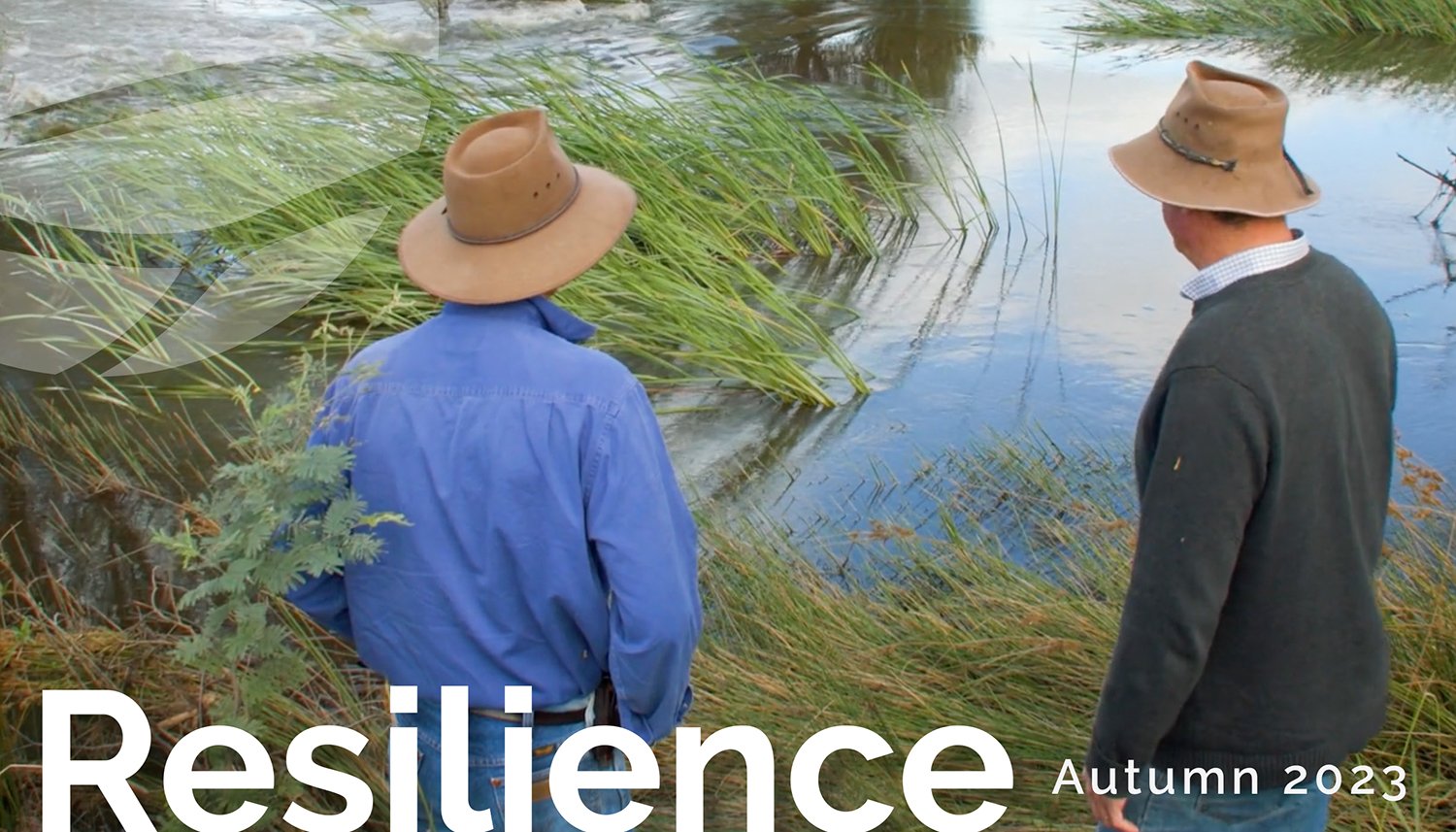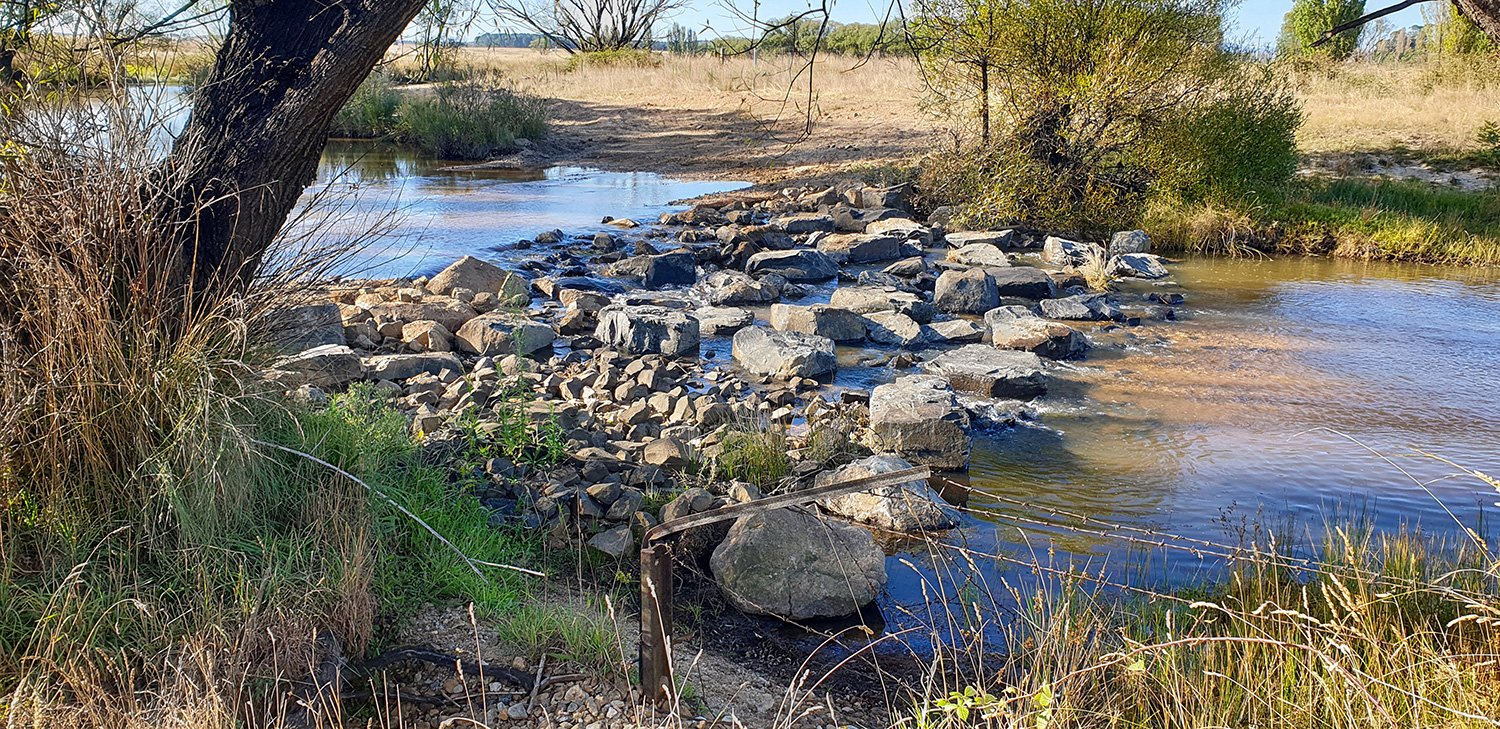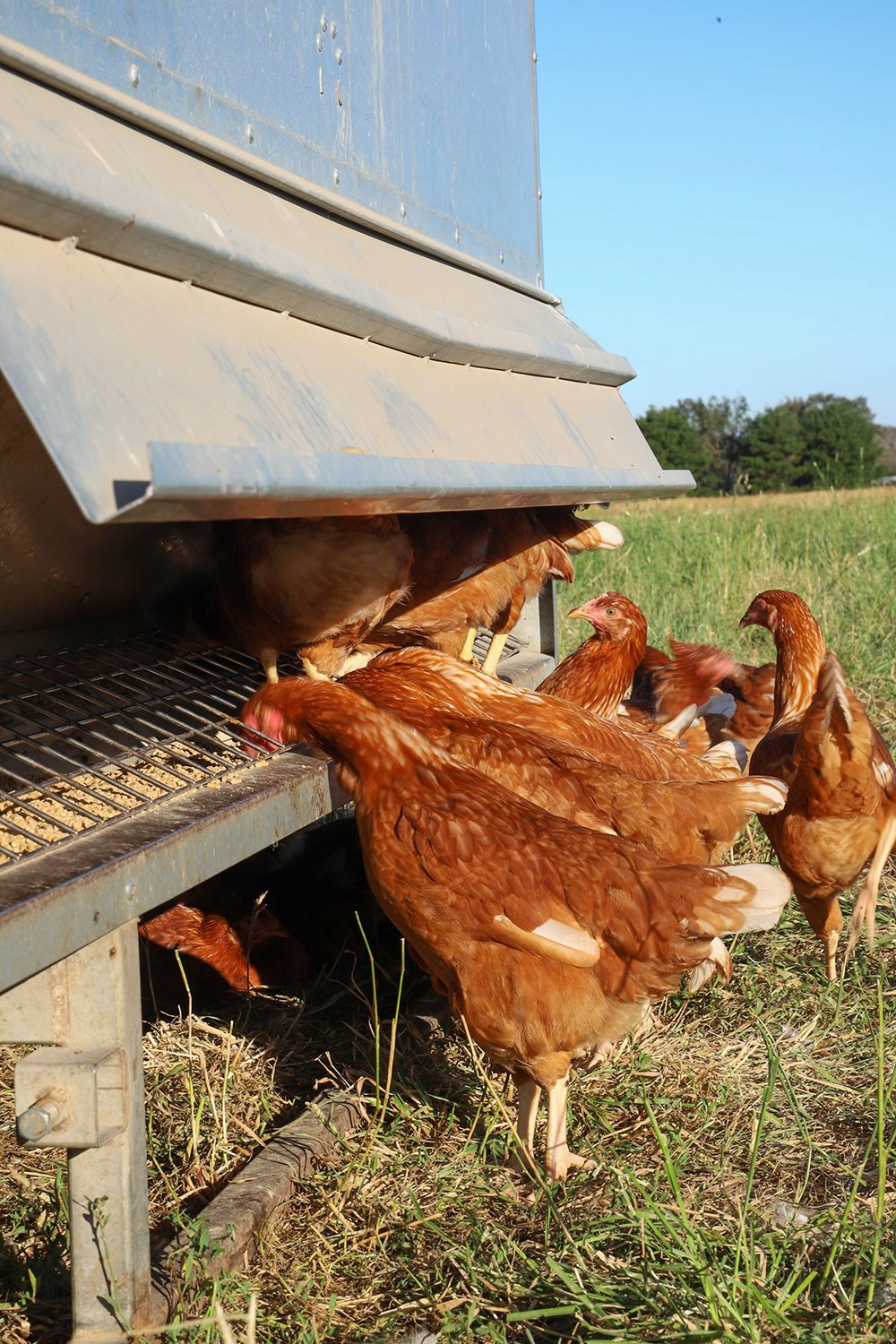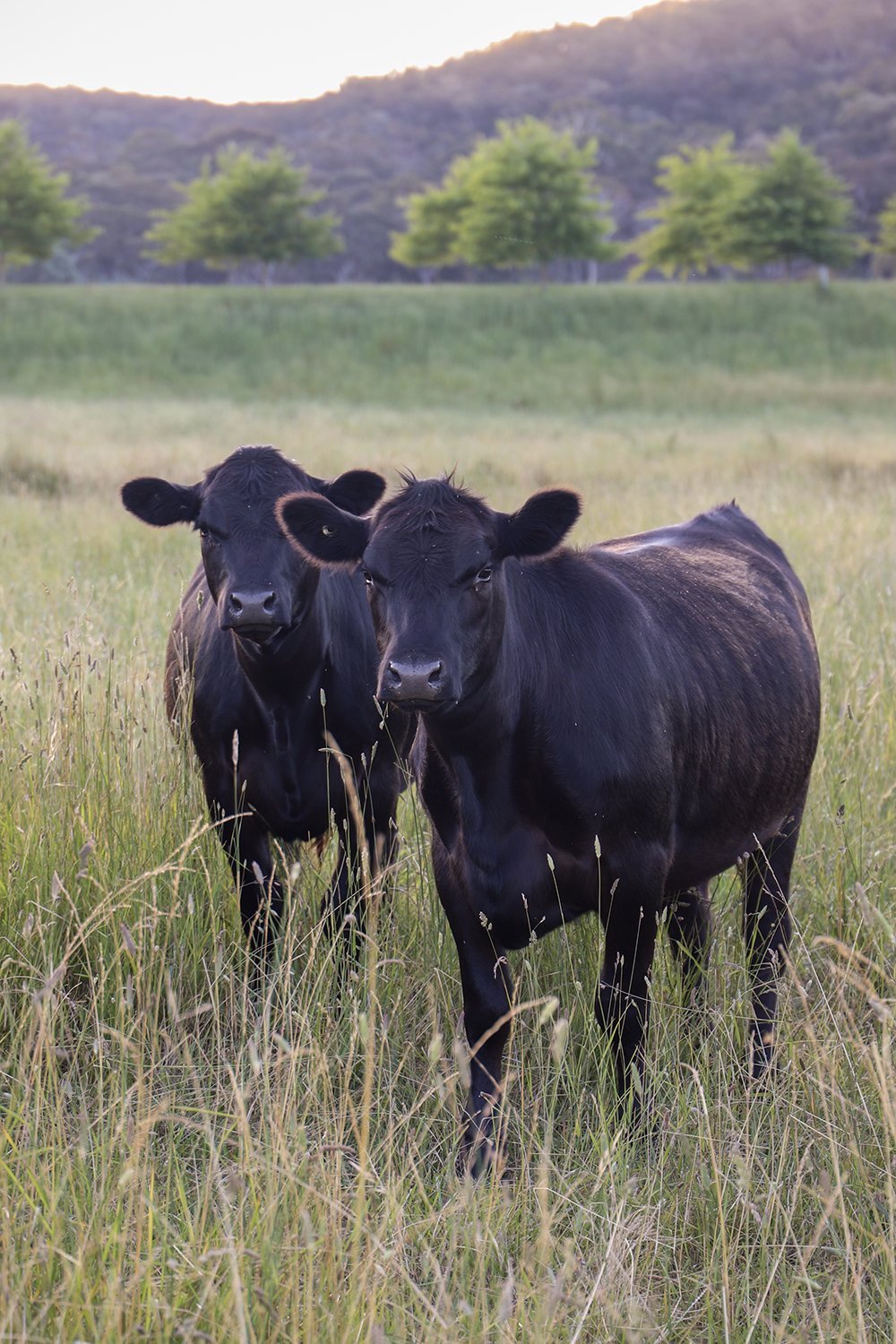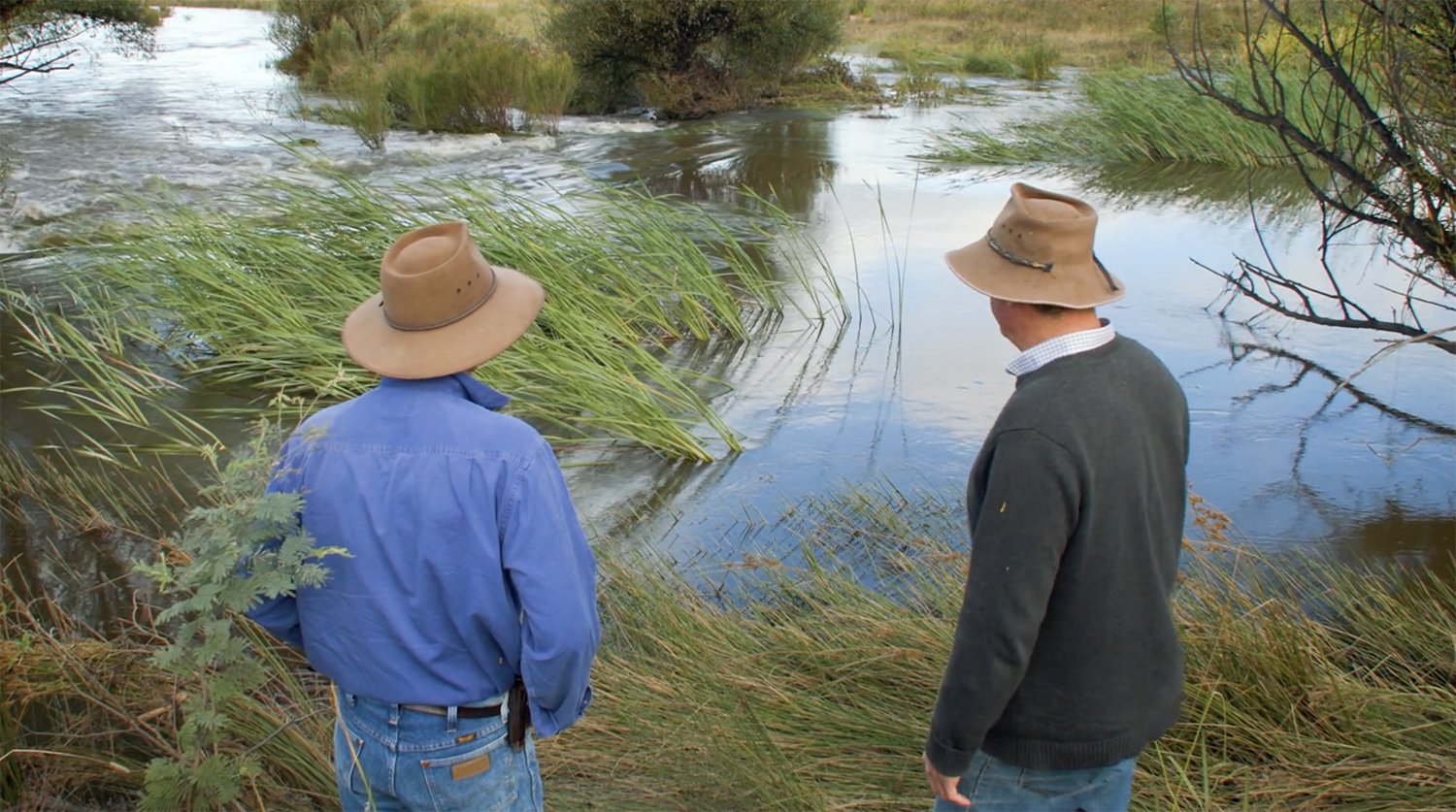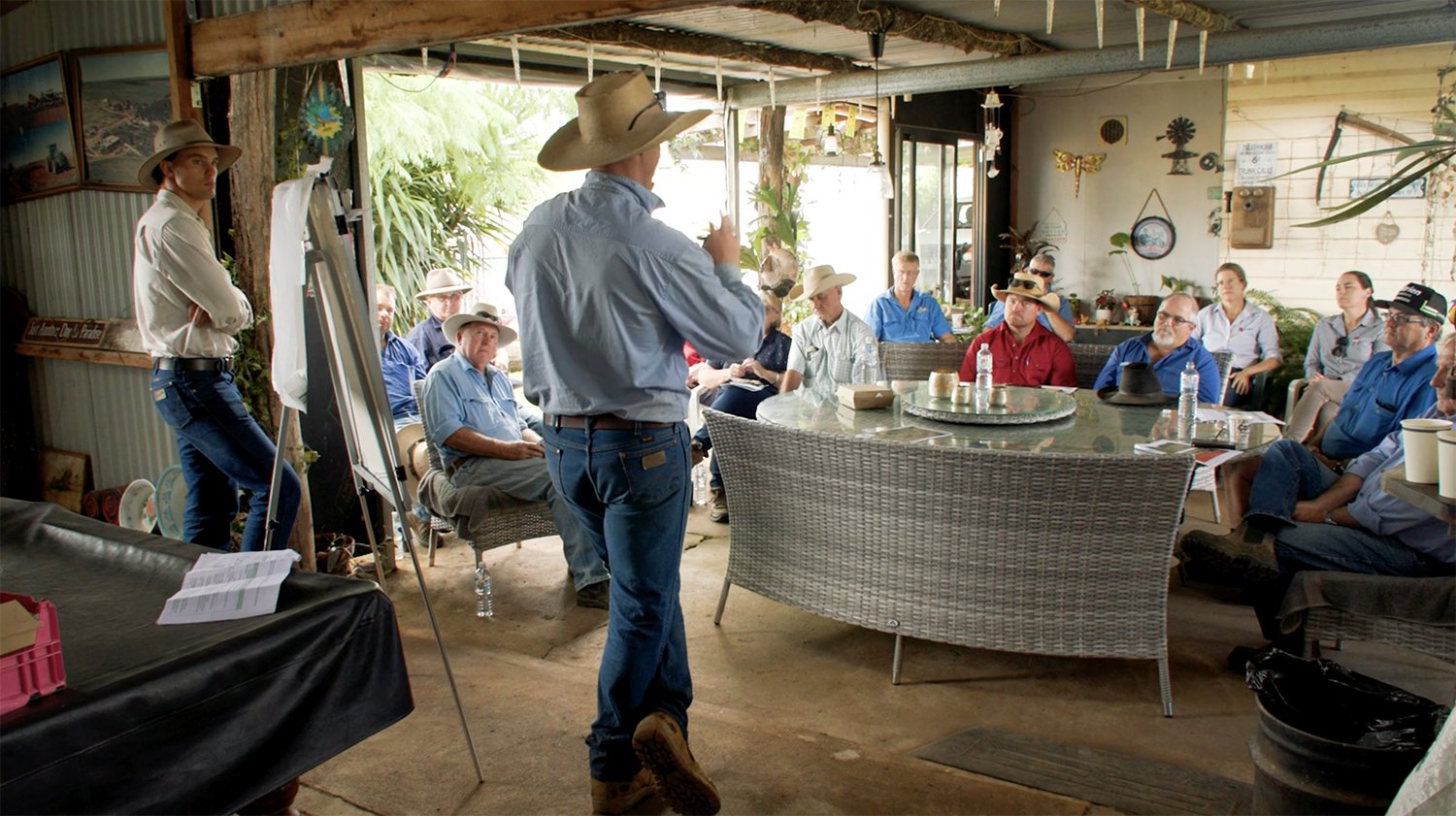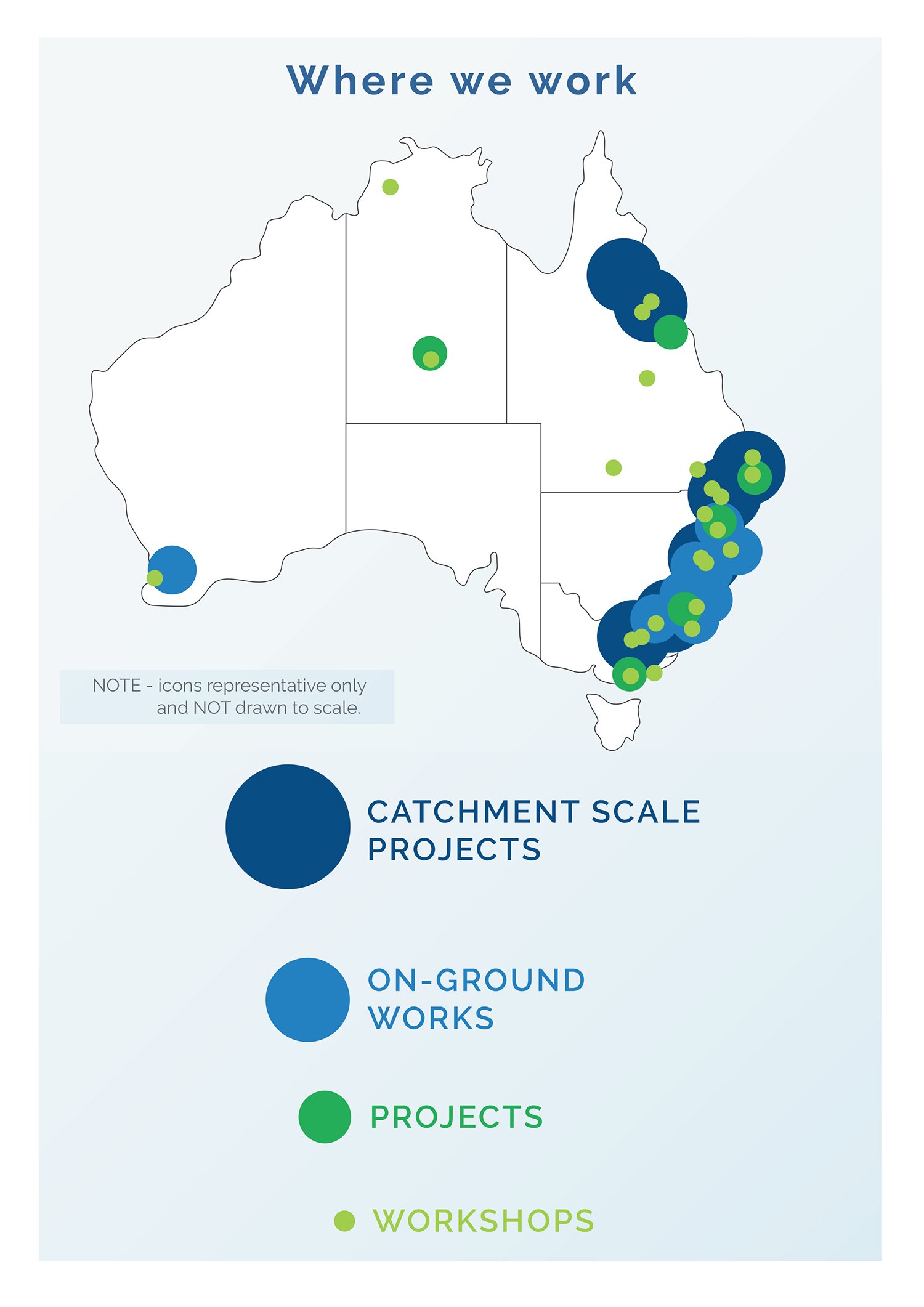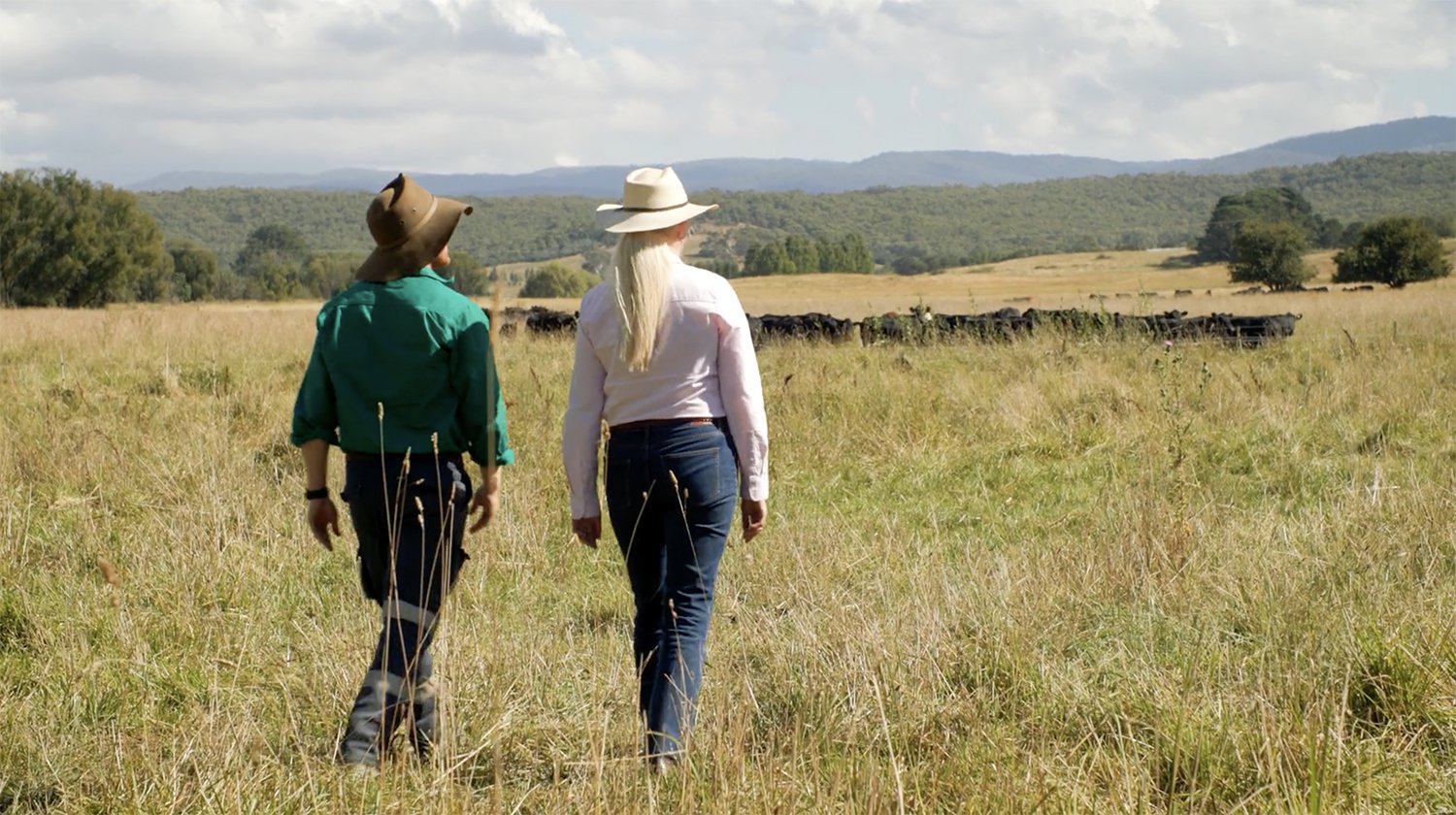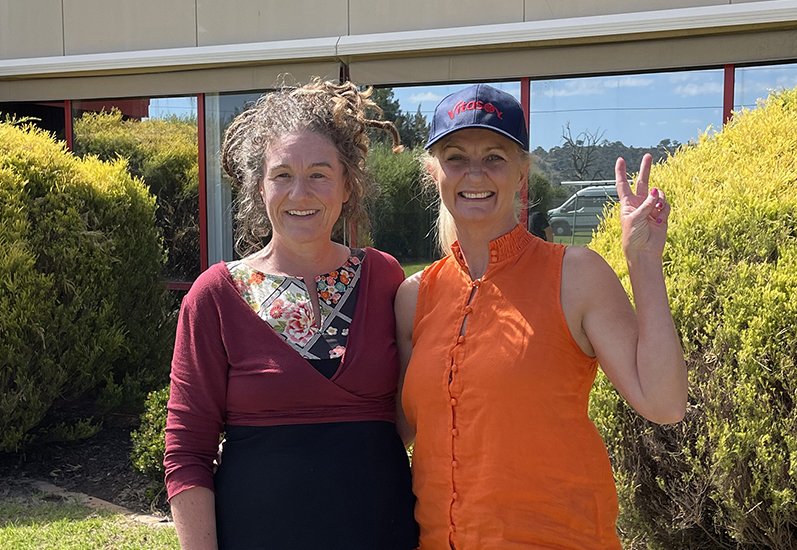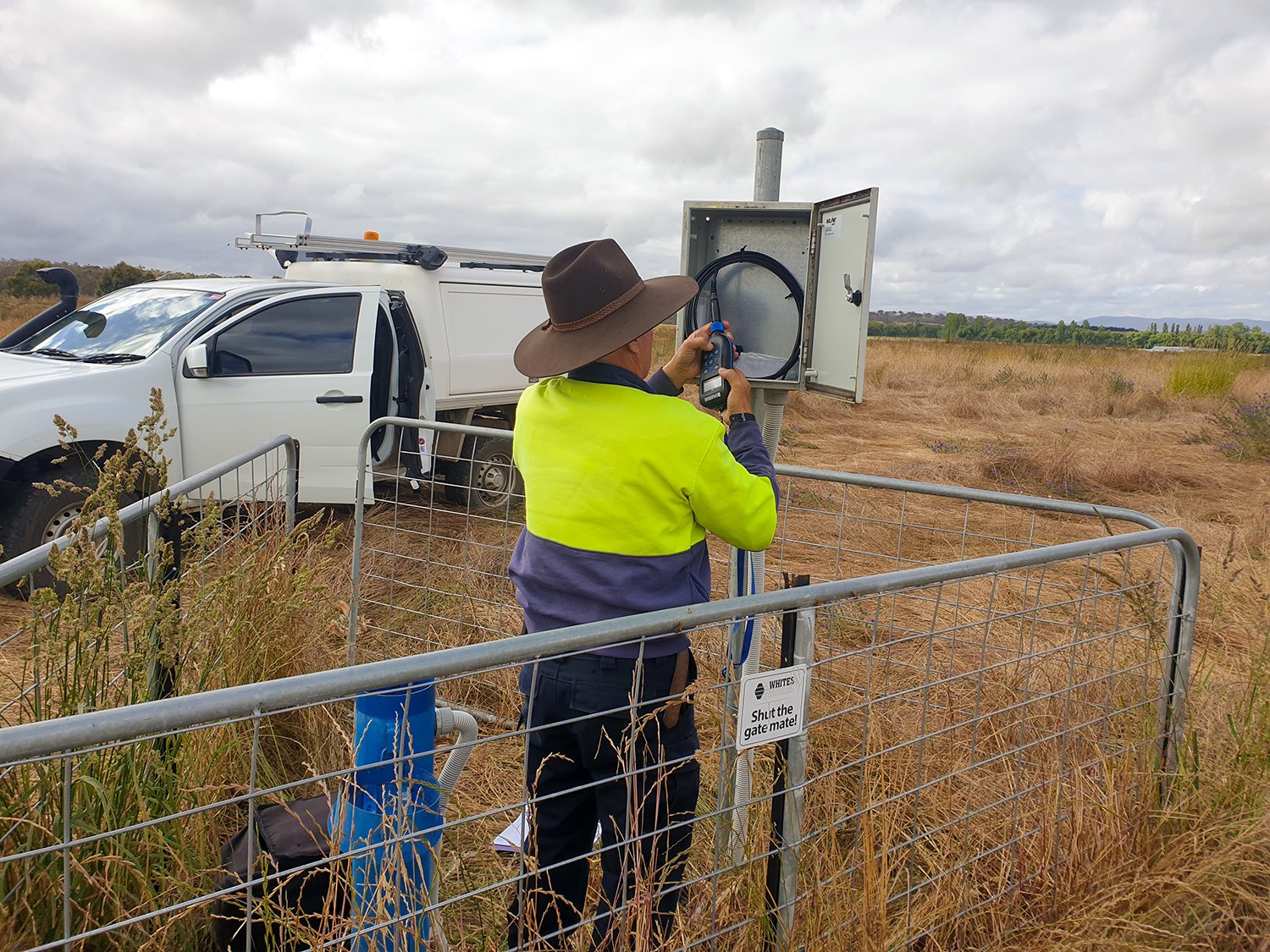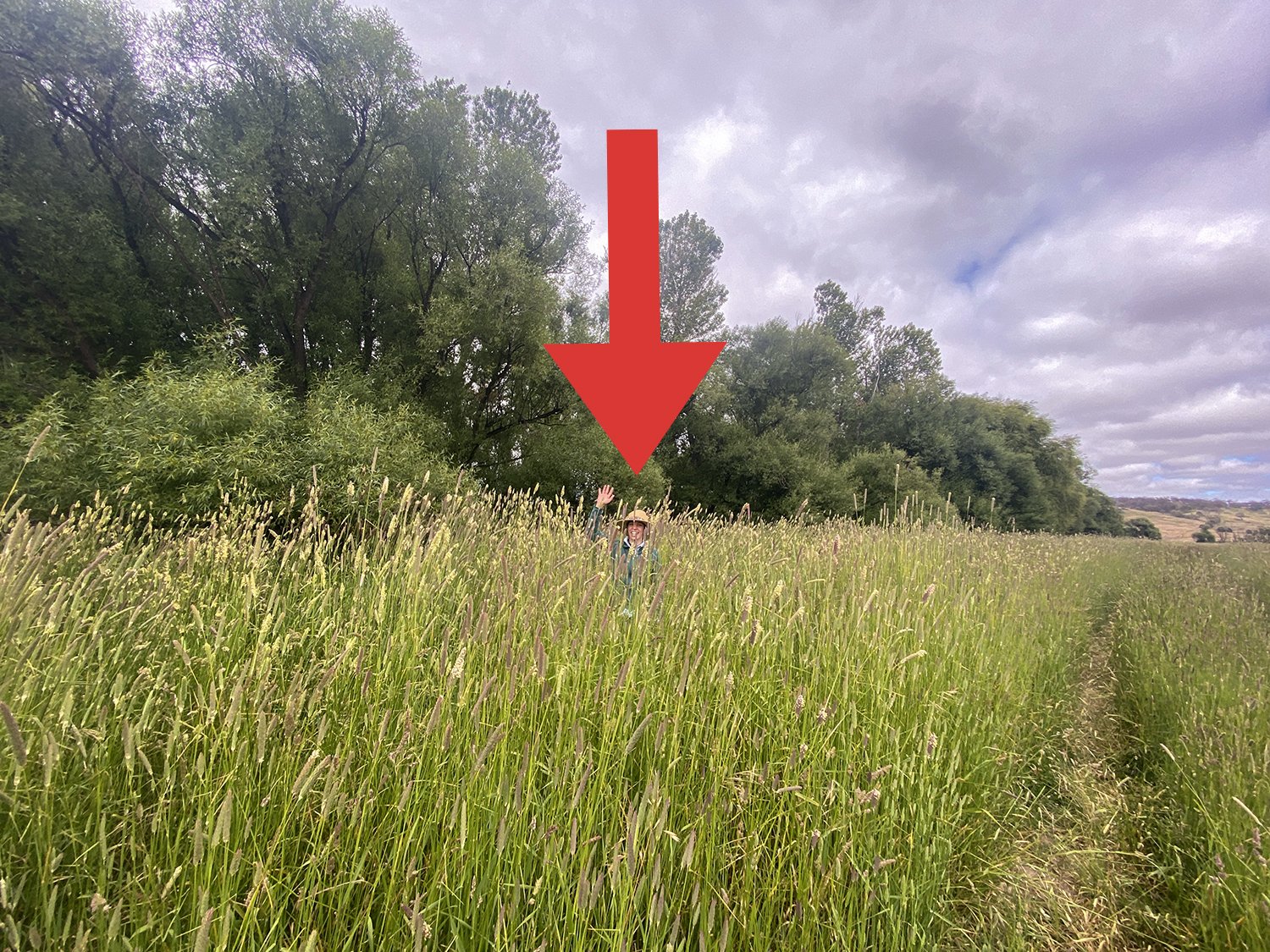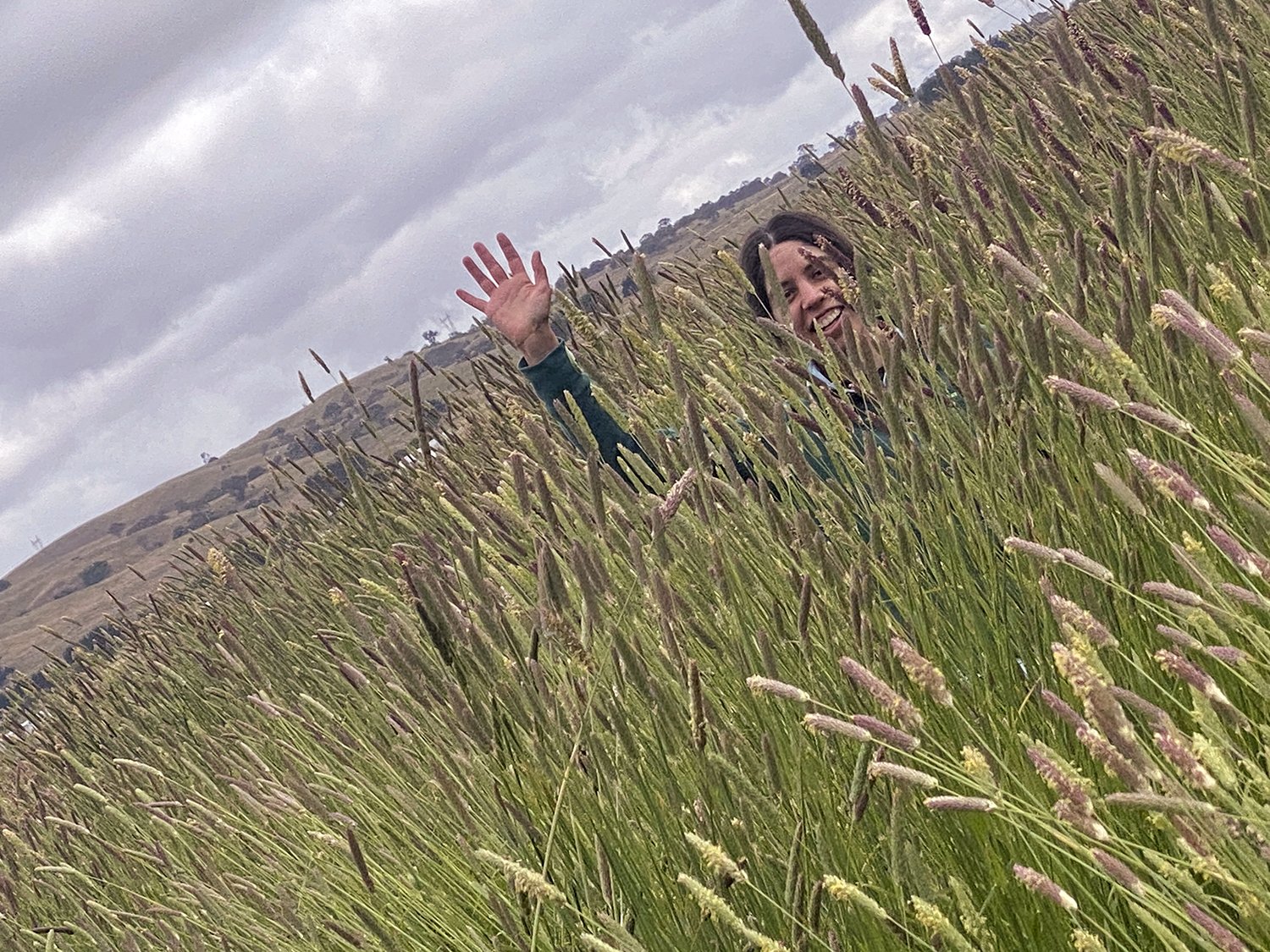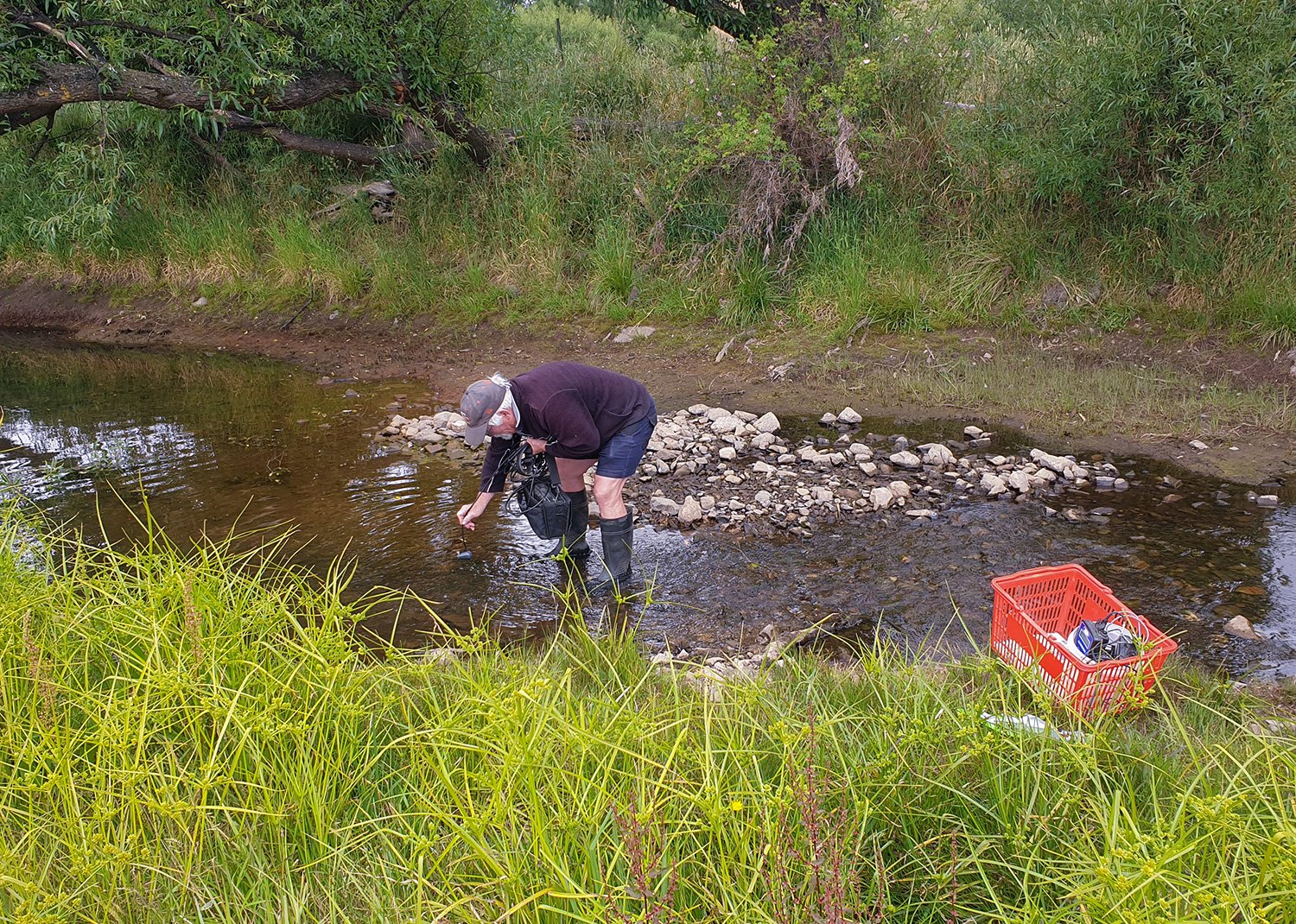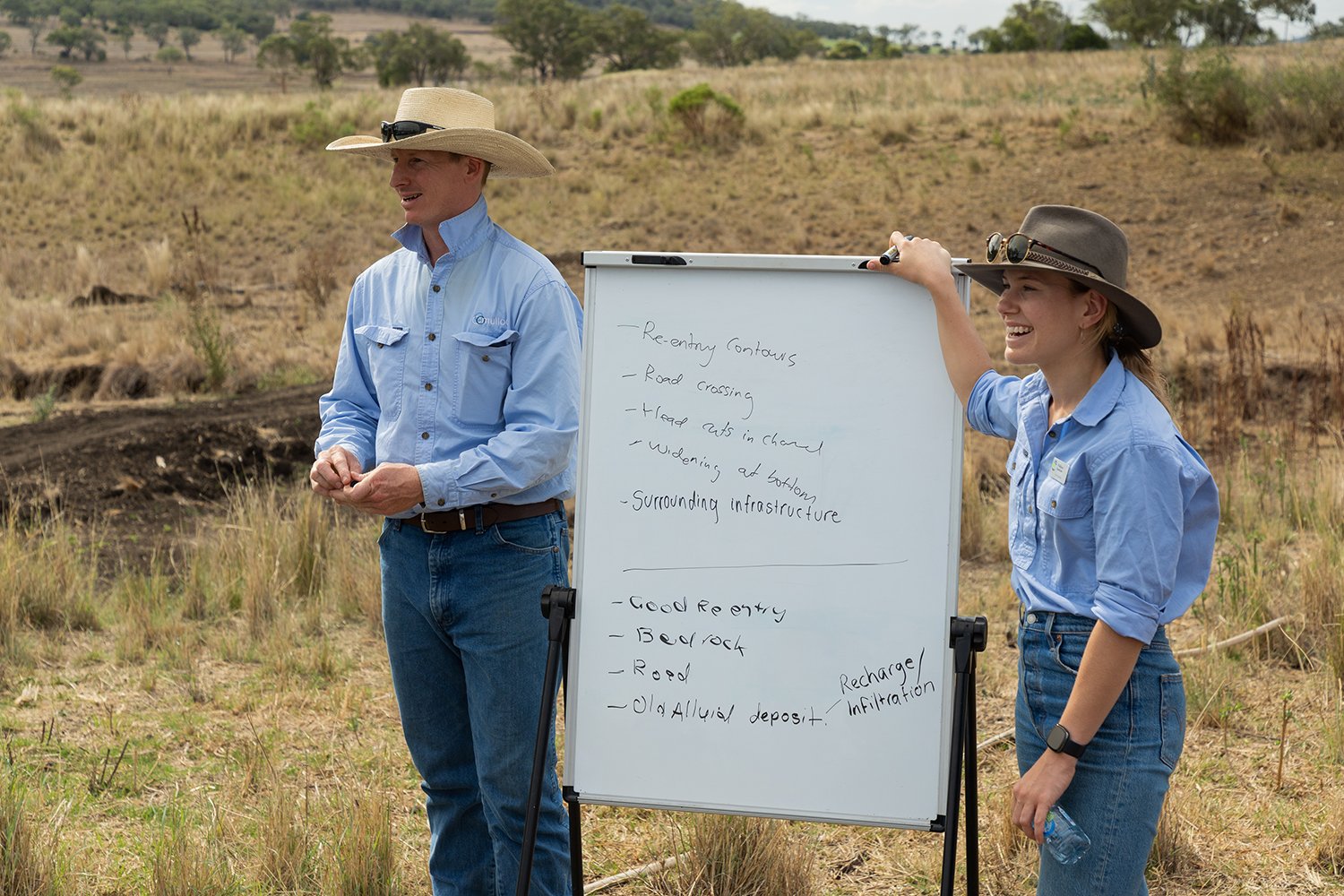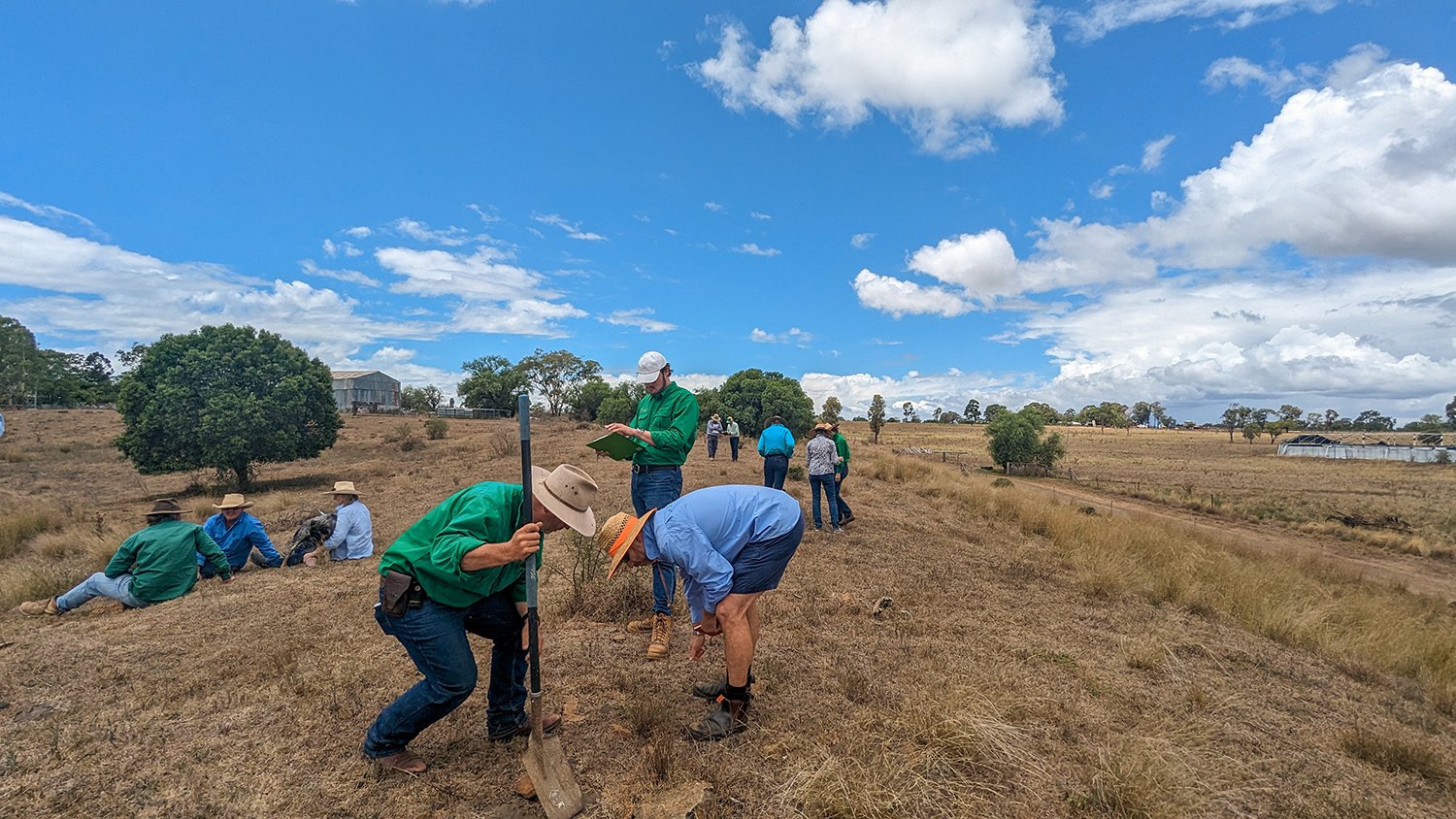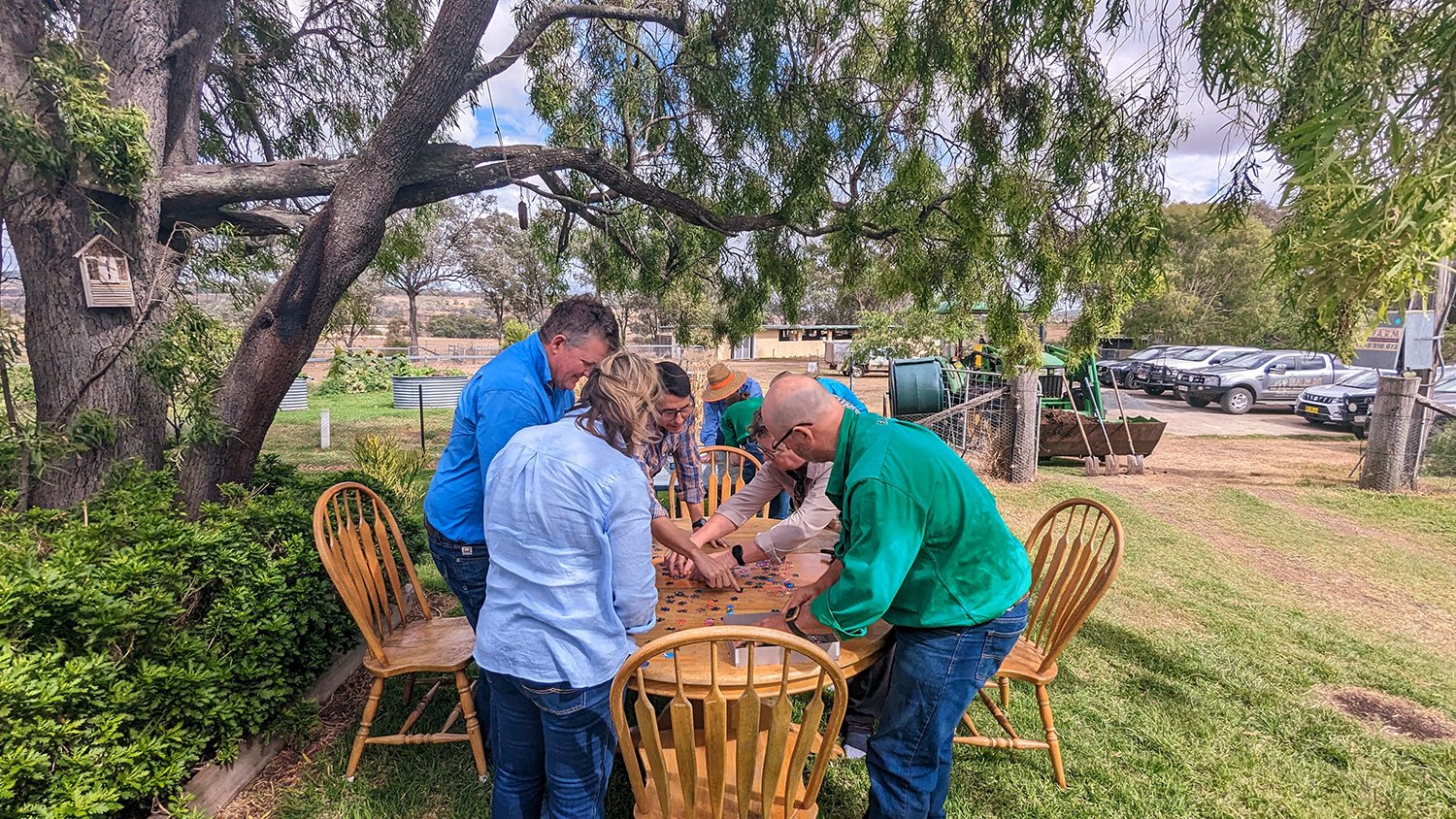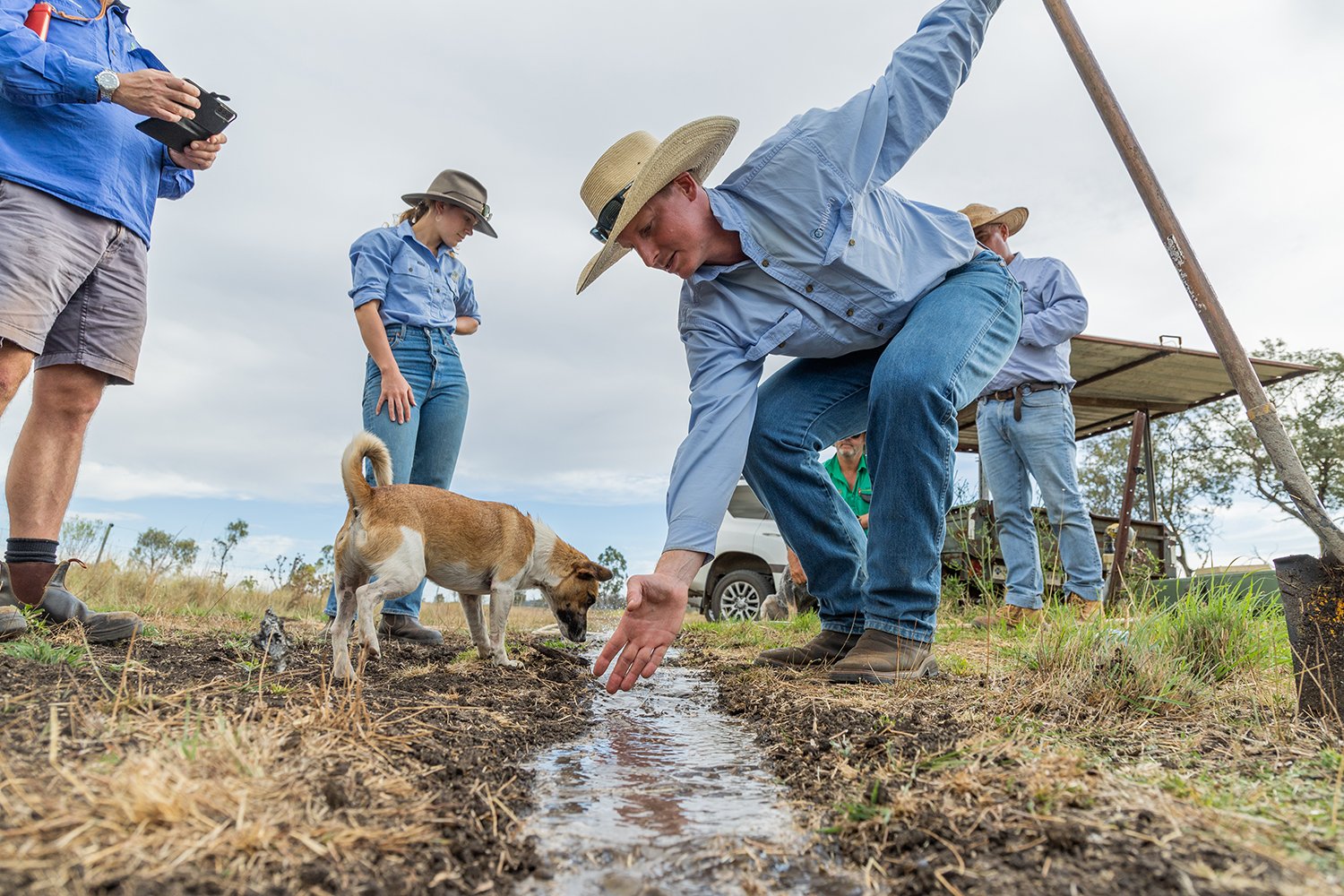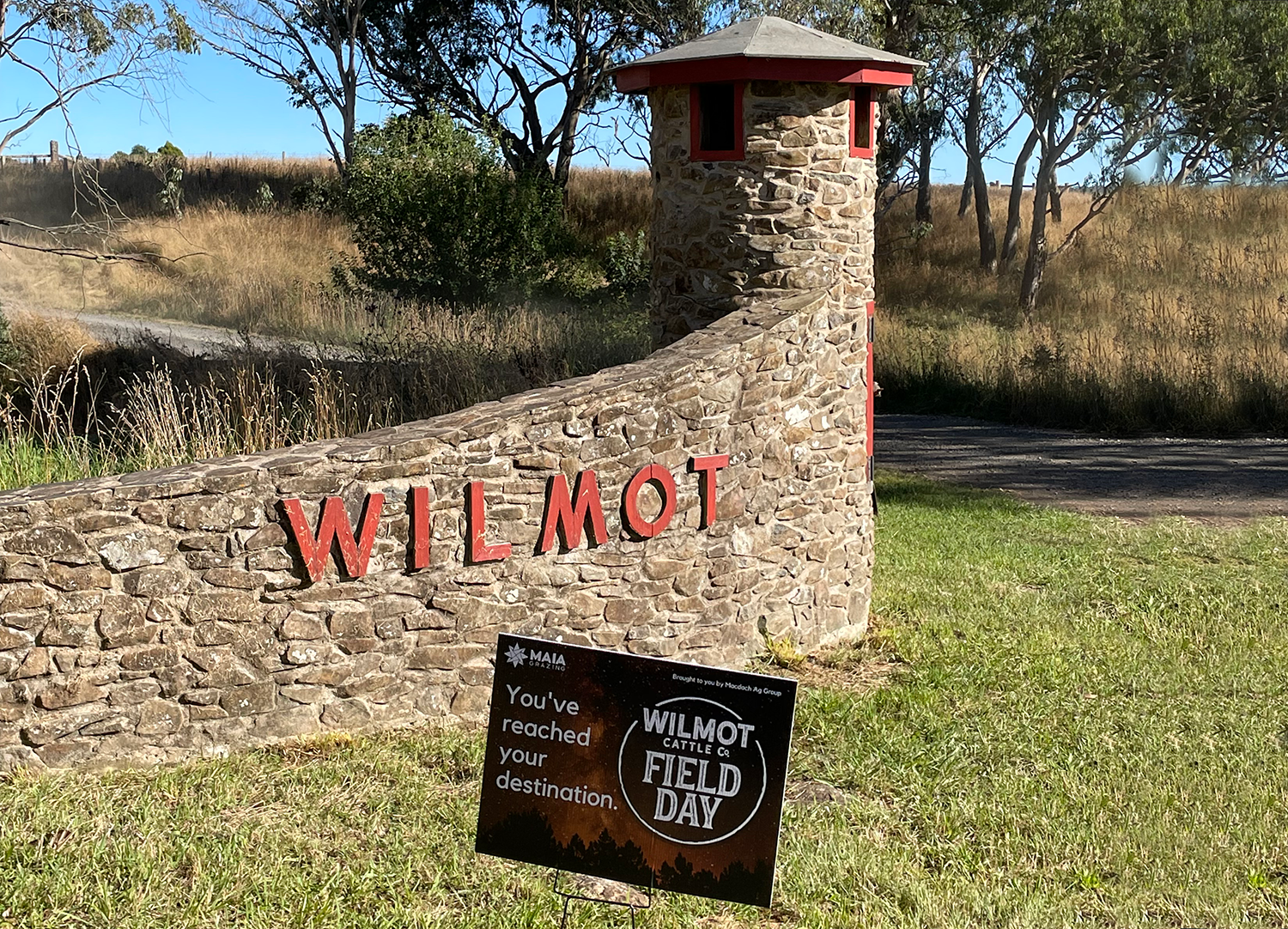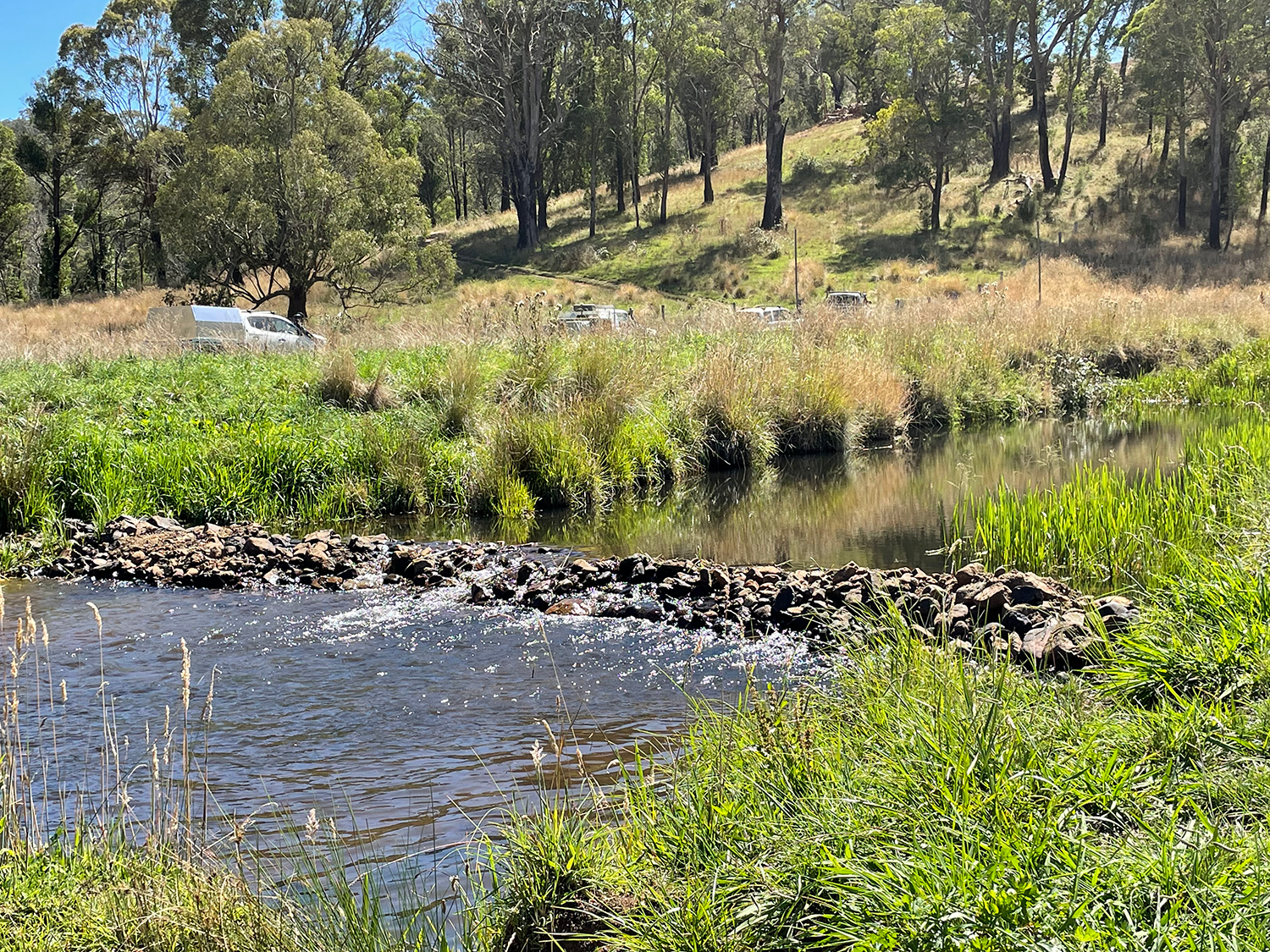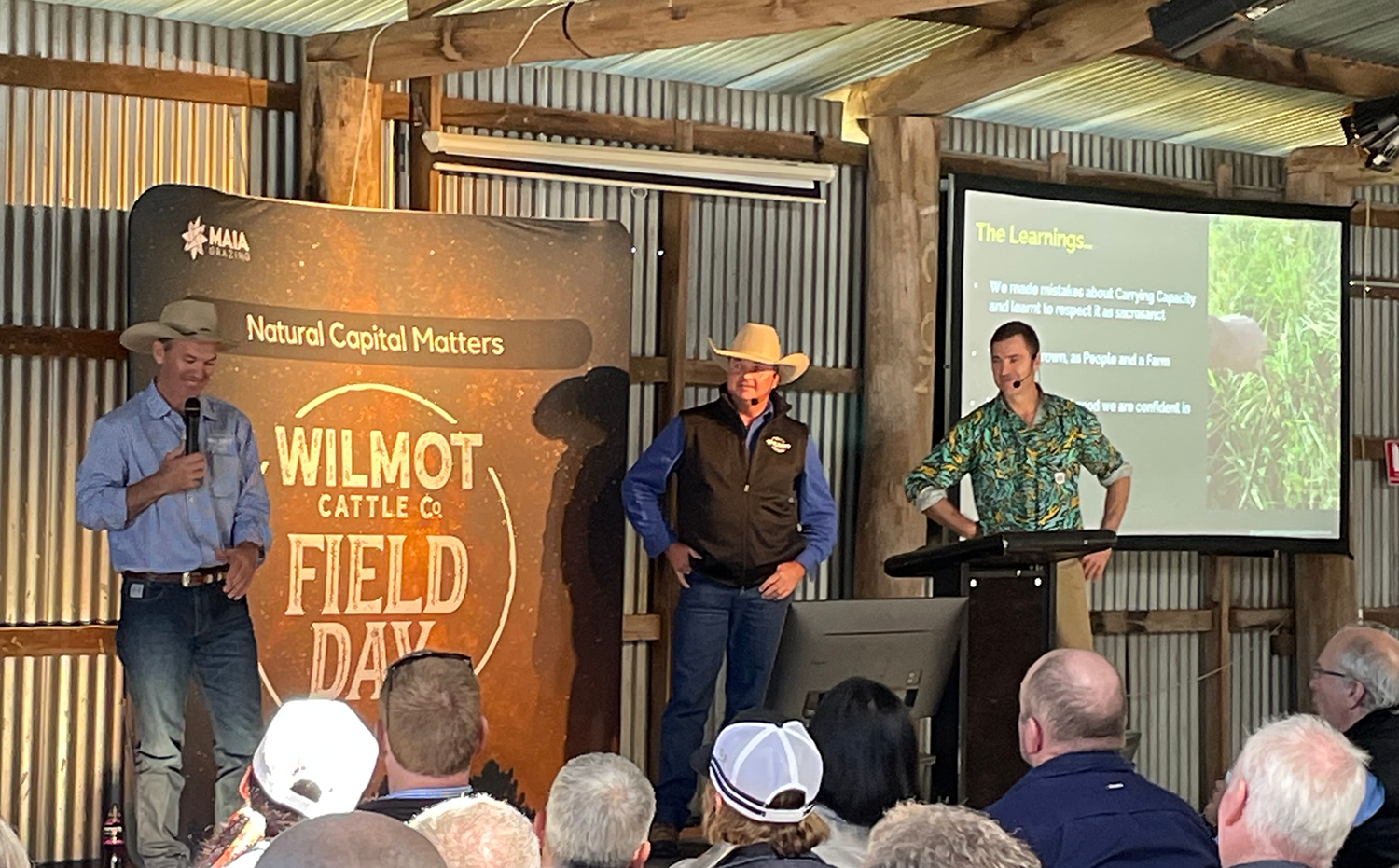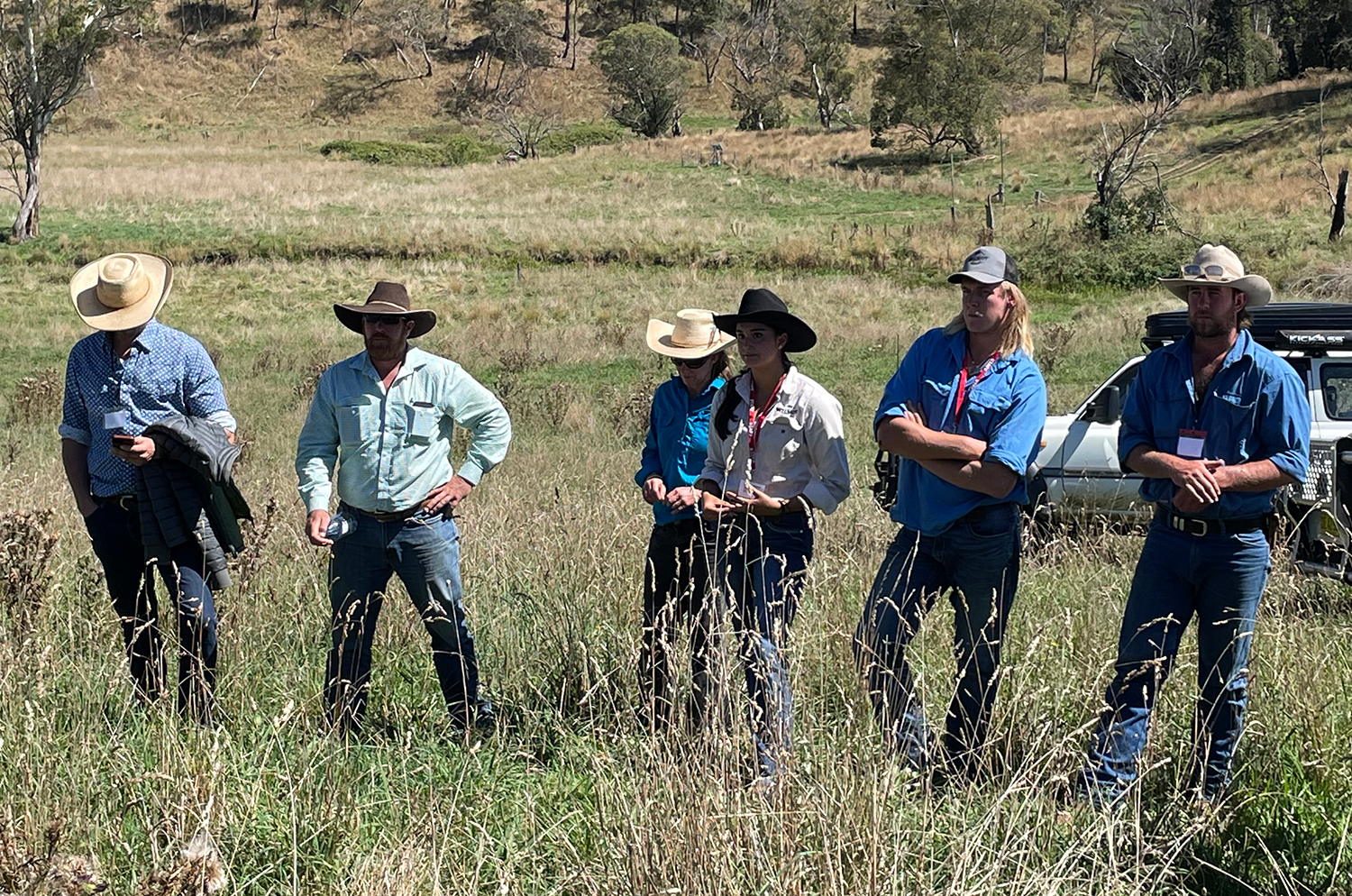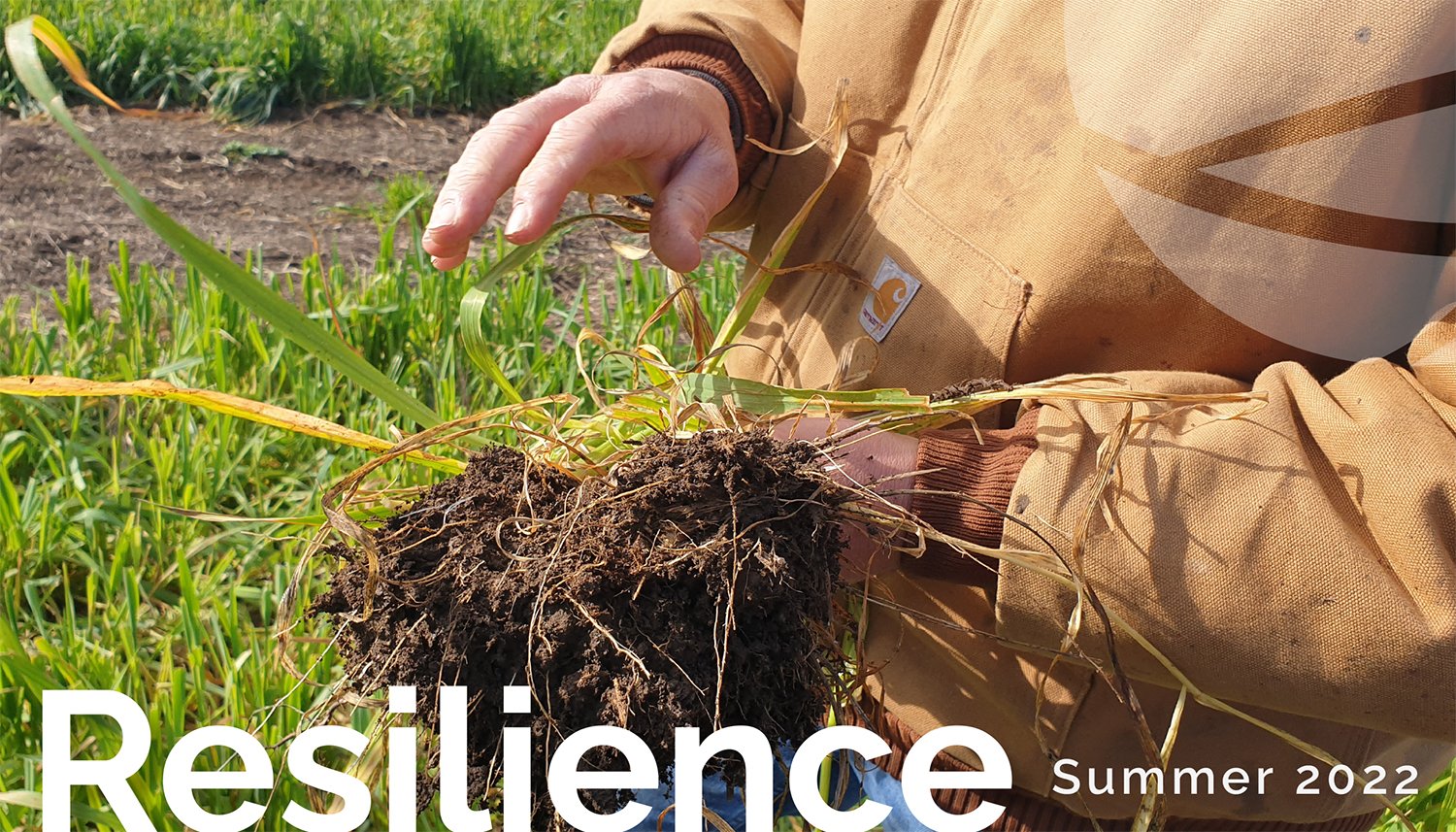Enjoy our latest news here: https://conta.cc/3JagBwy
Flow levels in Mulloon Creek have finally dropped enough for some much-needed maintenance of in-stream structures to take place. Three years of above average rainfall and high flow conditions has meant that some structures which needed some minor maintenance had to withstand the conditions until it was dry enough.
This picture shows a structure after some extra-large rock was placed on the ramp, which will hold the smaller rock in place the next time a big pulse comes through.
These leaky weirs have been installed as part of the award-winning, catchment-scale Mulloon Rehydration Initiative which aims to to rebuild the natural landscape function of the Mulloon catchment and boost its resilience to climatic extremes. This is resulting in more reliable stream flows, improved ecosystem functioning and enhanced agricultural productivity. The project spans 23,000 hectares and includes 23 landholders.
The Mulloon Rehydration Initiative is jointly funded through the Mulloon Institute and the Australian Government’s National Landcare Program and is supported by the NSW Government’s Environmental Trust.
It was a dry finish to summer on the farms with February bringing hot, windy weather and below average rainfall. This provided a window for progress on several key projects at Duralla including some maintenance on our crossings and in-stream structures/leaky weirs after three seasons of floods. Thanks to the TMI team for their work on fixing those up.
Long-term forecasts are for more dry weather and a return to El Nino, but for now the flats are still looking lush and providing quality feed for our cattle late into the season. As a result, our Duralla weaners are in good knick leading up to the sales in late March.
The farms have been teaming with bird life with the warmer weather and a variety of food sources on offer with seeds from native and exotic tree species in abundance across the farm. The return of the Gang-gang Cockatoos is always a highlight at this time of year – they particularly love the Pepper Trees.
We’re looking forward to the autumn ahead with plenty of projects in the pipeline and key milestones approaching. Apart from the rapid shortening of the days, it’s always a nice time of year with the crisp mornings and turning of the leaves. We’d love to share it with you, so if you have a corporate or private event coming up that you’d like to hold at our farms, please reach out via our website.
To stay up to date with what’s happening on the farms you can also follow our Instagram @mullooncreeknaturalfarms
Principal Landscape Planner Peter Hazell talking with John West, a landholder in the Mulloon Rehydration Initiative*. [Photo: Nviro Media]
Planning for bigger things
In our Resilience Summer 2022 edition, I applauded the NSW Government’s positive move to amend its Infrastructure State Environment Planning Policy (ISEPP) to define ‘Landscape Rehydration Works’ and make them exempt from the Planning Act. While this was a wonderful step forward and a reward for the Mulloon Law Committee’s superb work, many more hurdles still remain for farmers and landholders wanting to undertake this environmental repair and regeneration work.
The law committee are now focused on establishing a national code that will more easily enable landscape rehydration and regeneration works. Under the leadership of board member Matt Egerton-Warburton, our pro-bono law committee is convinced such a code would help open the floodgates (pun intended) on environmental repair and regeneration across Australia.
Regenerative Agriculture Consultant Sam Skeat speaks with landholders in Queensland. [Photo: Nviro Media]
Taking it National
When we first identified that the NSW Planning Act was effectively preventing environmental repair, we brought this problem to the NSW Government and provided them with a solution, which ultimately resulted in changes to the ISEPP.
At a national scale, we have simarly identified the problem and are currently drafting a national code for federal, state and territory governments to consider. Dr Gerry Bates has led the way in developing this code in his role on the law committee, along with fellow committee members Matt Egerton-Warburton and Wilf Finn, and very ably assisted by Mulloon’s Peter Hazell and Dr Laura Fisher, and oversight from CEO Managing Director Carolyn Hall.
Our experience has shown that there are millions of kilometres of eroded and degraded watercourses throughout the country, with farmers and landholders who are keen to do something about repairing them. But when faced with the hurdles of multiple applications, studies and reports that cost a fortune before work can even begin, too many of them are saying, “its just too hard”.
A national code would closely resemble something like the National Construction Code, which is “Australia’s primary set of technical design and construction provisions for buildings”. A similar code for landscape rehydration and regeneration would help alleviate many of the ‘too hards’ encountered when trying to undertake landscape repair work.
Taking it to the minister
To really get this moving nationally, I’ve written to the Federal Minister for Environment and Water, Tanya Plibersek, outlining the reasons why a national code for landscape rehydration and regeneration is so urgently needed. I highlighted that such a code would directly solve problems identified in the recent State of the Environment Report, along with recommendations made in the Samuel’s Review of the Environment Protection and Biodiversity Conservation Act. Minister Plibersek has made it clear she wants the Federal Government to act on these issues and that there is little time to wait. I’ve encouraged her to take this national code through the National Cabinet process, which would be the most efficient and effective way of achieving the change nationally.
In my letter to Minister Plibersek, I pointed out that from our experience, up to $400k could be spent on the designs, reports and investigations needed to obtain approval for landscape rehydration works when they may only cost $40k to design and implement. It seems non-sensical when these works have been scientifically shown to repair degraded environments, increase biodiversity, improve agricultural productivity (with the right farm management) and positively mitigate the effects of climate change.
Gary Nairn AO
Mulloon Institute – Chairman
LEARN MORE: Calling for a national code for landscape rehydration and regeneration
*The Mulloon Rehydration Initiative is jointly funded through Mulloon Institute and the Australian Government’s National Landcare Program, with support from the NSW Government’s Environmental Trust.
Carolyn Hall (CEO & Managing Director) and Kelly Thorburn (Communications & Media Manager) recently attended a marketing and networking event with Vitasoy Australia and several of its partners, including TetraPak, CafeSmart and social media experts The Pistol. It was a real pleasure to meet other partners in the Vitasoy network and spend some time together in Vitasoy’s hometown of Albury Wodonga.
The event started at the Mitta Mitta Canoe Club on the Murray River where we enjoyed watching locals float down the river on a hot day, while we explored marketing concepts for new Vitasoy products and looked at how partners like Mulloon could be involved in and benefit from the marketing process.
A vibrant and animated dinner that evening provided the opportunity to connect more deeply with CafeSmart team members, Isabella Stanley and Cynthia Mac Caddon. CafeSmart actively raises funds through participating cafes where the purchase of coffees helps contribute to local projects that aim to address homelessness. Vitasoy Australia’s CEO David Tyack also popped in for a meet and greet.
The last day included a trip to the Vitasoy factory where the plant milk process and commitment to more sustainable packaging was very clear. The event finished with a plant-based yoghurt tasting that had everyone surprised and smiling.
Hats off to Cara Harrington and Nick Bartram who continue to demonstrate Vitasoy’s commitment to sustainability, social impact, and plant-based milk! And well done to Bella Ericson from Vitasoy who did a great job taking caring of us all during the event.
Finally, a huge thanks to Vitasoy Australia, the Mulloon Institute’s first-ever corporate sponsor. They have pledged a generous $1.25m over five years to help us rehydrate catchments around Australia and we look forward to continue working together on this!
Tony Bernardi conducting instrument maintenance in the field.
A key and unique part of the Mulloon Rehydration Initiative is its comprehensive integrated monitoring plan. This enables the impacts of the rehydration and rehabilitation work to be monitored in the long-term and demonstrate the crucial link between farm productivity, water management, and numerous environmental aspects of landscape repair.
It includes a suite of monitoring activities within the catchment:
-
surface water (creek)
-
ground water (soil moisture = plant growth, and deeper aquifers)
-
flora & fauna
-
pasture cover
-
biomass productivity.
The Mulloon Rehydration Initiative is a catchment-scale project that aims to rebuild the natural landscape function of the Mulloon catchment and boost its resilience to climatic extremes for more reliable stream flows, improved ecosystem functioning and enhanced agricultural productivity. It is jointly funded through the Mulloon Institute and the Australian Government’s National Landcare Program, with support from the NSW Government’s Environmental Trust.
DATA COLLECTION
Science team members Tony Bernardi and Susie Miechels have been out in the field over recent months maintaining our monitoring instruments and collecting data from an array of piezometers (measuring groundwater aquifers), soil moisture sensors and stream gauges.
After having battled extended wet conditions over the past two years, this summer presented them with a different challenge – navigating exceptional pasture growth just to reach each instrument site.
As part of the data collection process, they worked closely with TMI partners HydroTerra who are managing the multiple sources of incoming data (digitally telemetred or manually collected in the field) using DataStreamTM. This is an important step in ensuring the data quality for upcoming analysis and reporting.
With rainfall easing over summer and a diminishing La Nina, monitoring the changes to surface and ground water will be of great interest in assessing the benefits of landscape rehydration.
AQUATIC MACROINVERTEBRATES
Dr Paul Cooper from the Australia National University has also been out and about at Mulloon, conducting monthly collections of aquatic macroinvertebrates along the creek, including water quality analysis.
Aquatic macroinvertebrates are an important indicator of the waterway health with results often reflecting water quality and associated habitat. Aquatic macroinvertebrates are an important food source for many other animals and provide a significant role in breaking down organic matter and nutrient cycling. They can be classed into five groups relating to their morphological (shape) and feeding characteristics (shredders, grazers, gatherers, filterers, and predators).
Paul also noted many other animals while out doing his fieldwork, including an impressive brown snake who was potentially looking for a good place to bask in the sun after breakfast.
Dr Paul Cooper (ANU) analysing water quality in Mulloon Creek.
Sam Skeat and Erin Healy discuss how to prioritise and decide which landscape rehydration works are the right fit for your property. [Photo credit: Tourism Media]
Regenerative agriculture consultant Sam Skeat and lanscape planner Erin Healy facilitated the first ‘Learning Programs’ course for 2023 with a Landscape Rehydration Bootcamp hosted by regenerative farming business F.A.R.M Agronomy near Pittsworth in Queensland.
Farmers, industry representatives and researchers came together to explore the fundamentals of water, recognising landscape form and understanding the way water moves, is stored and cycles through a landscape.
The days were filled with hands-on activities and great discussions about the types of landscape rehydration tools and interventions can be used to address degraded landscapes.
Participants used their farm maps to begin applying this understanding to their property, with Sam and Erin offering practical steps on how to recognise and prioritise areas to improve, when and where to start!
“Very informative workshop that has added to my ability to read landscapes. It has given me more tools to manage flow” – workshop participant
This bootcamp was made possible with the team from F.A.R.M Agronomy and our wonderful hosts Ian and Karen Moss. This educational project has been assisted by the New South Wales Government through its Environmental Trust.
Alaringa’s resident star ‘Herb’ keeps a keen eye on the water cycle during the bootcamp. [Photo credit: Tourism Media]
The Mulloon ‘Mentoring Program’ is the latest addition to our ‘Learning Programs’. It is open to all bootcamp graduates ready to take on their own landscape rehydration project, with the support of the Mulloon Mentors to put their plan into action.
The program includes online discussion sessions as well as additional support, such as reviewing plans and maps. The program has been designed to ensure each project proceeds successfully from project vision through the phases of prioritisation, design and implementation. Along the way, mentors will also share useful resources targeted to the needs of the project.
Mulloon’s Learning Programs have been assisted by the New South Wales Government through its Environmental Trust.
You’ve reached your destination. Making an entrance at Wilmot.
Last week the celebrated Wilmot Cattle Co held their annual Field Day over two days on the Wilmot regenerative farm at Ebor in NSW.
Mulloon Institute’s CEO Carolyn Hall, GM Jono Forrest and QLD Regen Ag Consultant Sam Skeat joined 300 delegates from right across Australia to explore and celebrate farmers building natural capital. With soil carbon being a focus point of discussion, attendees were reminded that soil carbon is only one part of a healthy system – water cycles, biodiversity and the social aspects of small business, families and communities are all interlinked as part of the natural capital equation.
Also on the table for discussion was the use of data as a key asset to monetising natural capital, and the linking of art in the practice of using soil samples and science to map landscapes.
Wilmot Cattle Co was proud to announce that all the food for the Gala dinner on Wednesday night was supplied by one farm!
The event was also the launch of Atlas Carbon, part of the Machdoc Ag Group which also incorporates Wilmot Cattle Co and Maia Grazing. Atlas Carbon provides tools, insight and support for farmers to integrate carbon sequestration into the farming business, driven by years of data-driven evidence.
The Mulloon team thank Wilmot Cattle Co, Stuart Austin and his team, Maia Grazing, and Carmel Onions and CBA for another great time at Wilmot.
Mulloon’s Sam, Carolyn and Jono at Wilmot.
Beautiful leaky weir in action on the Wilmot farm tour.
The Wilmot barn was home to regenerative farmers, graziers, educators and thought leaders to delve into a range of topics around the theme Natural Capital Matters.
Attendees enjoying the farm tour of beautiful Wilmot.
Enjoy our latest news here: https://conta.cc/3hEzAG2
